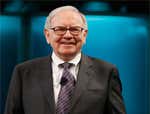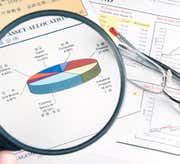
|
Before we can explore practical applications of economic profit and engage with the metric directly, it is necessary to understand the principles which underlie this concept. In this chapter we’ll explore how economic profit matters as a performance measure (distinct from a wealth metric), as well as how it is linked to market value added (MVA). Finally, we’ll break down the calculations of economic profit to show how they come back to one or more of the three basic principles outlined in the previous chapter.
Economic Profit Is a Performance Metric
The distinction between a performance metric and a wealth metric is a subtle one, but it’s an important clarification to make in a discussion of economic profit. A performance metric refers to a measure which is under company control (for example, earnings or return on capital). A wealth metric, by comparison, is a measure of value that depends upon the stock market’s collective and forward-looking view. Wealth metrics include equity market capitalization or a company’s price-to-earnings (P/E) multiple, for instance. These metric categories are different from one another, but they are nonetheless related.
Each performance metric has a corresponding wealth metric, and over a long enough period of time, a performance metric will theoretically impact its corresponding wealth metric. As an example, consider earnings per share (EPS), a fundamental performance metric, and its corresponding wealth metric, the P/E multiple. EPS is determined by variables which depend solely on the company’s actions, including earnings and shares outstanding. The P/E multiple, in contrast, is determined by stock price, meaning that it is a result of the stock market’s reaction to the company’s actions. A company influences its own P/E multiple, but it cannot control it. To put it in another way: EPS is a current or backward-looking fact, while P/E is forward-looking and reflective of broader market opinion.
In order to effectively pair a performance metric and a wealth metric, consistency is crucial. Each metric must reference the same group of capital holders as well as their respective claims on company assets. In our example above, EPS concerns the allocation of earnings to common shareholders, while the P/E multiple refers to equity market capitalization, or the value held by those shareholders.
Below is a chart which lists several common performance metrics alongside their corresponding wealth metrics. As a performance metric, economic profit corresponds to market value added (MVA) on the wealth metric side. We’ll explore this relationship further below.
|
Performance metric |
Wealth metric |
|
Return on Equity (ROE), EPS growth |
P/E Ratio |
|
Return on Capital (ROC or ROIC), Operating Income Growth |
Entity Value ÷ EBITDA
|
|
Economic Profit |
Market Value Added (MVA) |
|
Free Cash Flow |
Equity Market Capitalization (price x common shares outstanding) |
|
Cash Flow Return on Investment (CFROI) |
Total Shareholder Return (TSR) |
Economic Profit Is Free Cash Flow “Sliced Up”
According to the discounted cash flow (DCF) model, the intrinsic value of a company equals the present value (the “discounted value”) of its future free cash flows. If we are able to know the future free cash flows, we can then discount them into a single present value. (For a review of how this works, see Understanding the Time Value of Money and Taking Stock of Discounted Cash Flow.) See Figure 1 below for an illustration of how this principle works. In this case, the future free cash flows (taken only for a five-year period) are discounted to a present value of $40.
Figure 1 |
Source: Investopedia.com
Economic profit works in much the same way. The crucial distinction in this case, though, is that the intrinsic value of the company is split into two parts. One represents invested capital, while the other represents the present value of future economic profits. In other words:
Traditional Approach
Intrinsic Value = Present Value of Future Free Cash Flows
Economic Profit Model
Intrinsic Value = Invested Capital + Present Value of Future Economic Profits
Economic profit is often referred to as “residual profit,” or sometimes as “excess earnings,” and this is because it splits intrinsic value into these two separate parts In Figure 2, we’ll see how this works. The assumed variables from Figure 1 carry over in this case, and the value of the company’s equity is still $40. In this case, though, the green portions of each bar for the coming five years represent future economic profits and, therefore, a portion of the future free cash flows. We’ll examine how to calculate economic profits later on; through this figure, pay attention to how economic profits are those which are earned above the cost of capital.
Figure 2 |
Economic profit is the portion of free cash flow which remains after a capital charge is subtracted. In Fig. 2, as in the previous example, we are lucky to know the future economic profits (this is unlikely in the real world), and we can see that future economic profits have been discounted to a present value of $20. The invested capital portion of the present value is $20. Together, the tall blue and green bars in the first column represent how economic profit divides up intrinsic value into separate components.
The last element to consider in this chapter of the tutorial is MVA, which represents how the market values the firm above and beyond its invested capital. For Fig. 2, this is represented by the tall green portion of the first column, the $20 present value of the future economic profits. On the other hand, if this company happened to return zero future economic profits, the MVA would be 0, and the intrinsic value would be solely linked to the invested capital (the blue portion of the bar at the left side).
In the real world, neither a company nor the market more broadly can predict future cash flows or profits perfectly. As a result, MVA gets broken down into two different approaches. MVA can be set by the market, or it can be theoretical and linked to expected future economic profits. Just as a company’s market valuation is expected to eventually converge with its discounted free cash flow, so too is the observed MVA expected to converge with the discounted economic profit value. In this case, “observed MVA” refers to the equity market capitalization less the invested capital.
Another way of describing these relationships is as follows, with à meaning “moves toward becoming the same as”:
Traditional Valuation
Equity Market Capitalization à Discounted [Free Cash Flows] = Intrinsic Value of Firm Equity
Economic Profit Valuation
Equity Market Capitalization à Invested Capital + Discounted [Economic Profit] = Invested Capital + Market Value Added (MVA)
With this, we can see that discounted economic profits are equal to intrinsic MVA, and thus why economic profit and MVA are a matched pair. The observed MVA should, over time, move toward becoming intrinsic MVA.
Economic Profit: Three Big Steps
Next, we’ll explore the overall calculation of economic profit, which itself be broken down into three smaller sets of calculations. Each reflects one of the three central ideas to economic profit as a concept:
| Idea | Implication |
| 1. Cash flows are the best indicators of performance. The accounting distortions must therefore be "fixed". | Translate accrual-based operating profit (EBIT) into cash-bashed net operating profit after taxes (NOPAT). |
| 2. Some expenses are really investments and should be capitalized on the balance sheet. True investments must therefore be recognized. | Reclassify some current expenses as balance-sheet (equity or debt) items. |
| 3. Equity capital is expensive (or, at the very least, not free). This expense must therefore be accounted for. | Deduct a capital charge for invested capital. |
Figure 3 below illustrates these ideas:
Figure 3 |
While we’ll look at the particulars of these calculations in subsequent sections of the tutorial, we can begin to explore the implications of this illustration now.
Our calculation begins with earnings before interest and taxes (EBIT), a pure income-statement measure. First, we must make several adjustments to move this measure closer to representing actual cash flow (reflecting idea #1). Next, certain expense items, such as money spent in the current accounting period, are identified as investments; this means that they are truly meant to create some type of long-term asset. We then reclassify those expenses onto the balance sheet (representing idea #2).
In completing these first two steps, we generate net operating profits after taxes (NOPAT). NOPAT allows us to create a cash-based measure of operating performance. There is no exact analog to NOPAT on the income statement; the closest figure would be something like “earnings before interest but after taxes” (EBIAT).
NOPAT represents profits before the cost of debt service and the cost of equity capital, so we then must deduct a capital charge (showcasing idea #3). A capital charge is what investors will need in order for their investment to be exactly worthwhile. In this way, we could consider it “economic rent.” If NOPAT equals the capital charge, the company has met its “rent obligations” to investors, but it has produced no economic or excess profits. Thus, NOPAT profits above and beyond the capital charge (those green bars from Fig. 2) are truly in excess, and that is where economic profits or value added takes place.
Summary
With this chapter, you should have a clearer picture of the links between economic profit and market value added. Economic profits create MVA. When profits are discounted to the present value, they should ideally approximate the additional value the market assigns to the company above its invested capital. Further, the economic profit calculation can be summarized as sets of calculations corresponding to three main ideas: cash is a better measure of operating performance than accruals are, some expenses are, in actuality, investments, and investment capital is not free. It is these three concepts which will lead us in our calculations throughout the remainder of the tutorial.
EVA: Calculating NOPAT
-
 Investing
InvestingValue Investing: Why Investors Care About Free Cash Flow Over EBITDA
Examine value investing philosophy and methodology to see why free cash flow is more important than EBITDA in pure intrinsic value calculation. -
 Investing
InvestingInterpreting a Strategy Performance Report
A strategy performance report can provide key metrics to decide if your strategy is a winner. -
 Investing
InvestingHow to Identify Mispriced Stocks
Find out how to identify mispriced stocks. Learn about intrinsic and relative valuation methods based on fundamentals, and technical analysis. -
 Investing
InvestingUnderstanding Economic Value Added (TM)
Discover the simplicity of Economic Value Added (TM), also known as economic profit. -
 Investing
InvestingIs Warren Buffett Really A Value Investor?
Warren Buffett has long been hailed as a value investor. But is that statement still accurate? -
 Investing
InvestingPeer Comparison Uncovers Undervalued Stocks
Learn how to put one of the top equity analysis tools to work for you.


